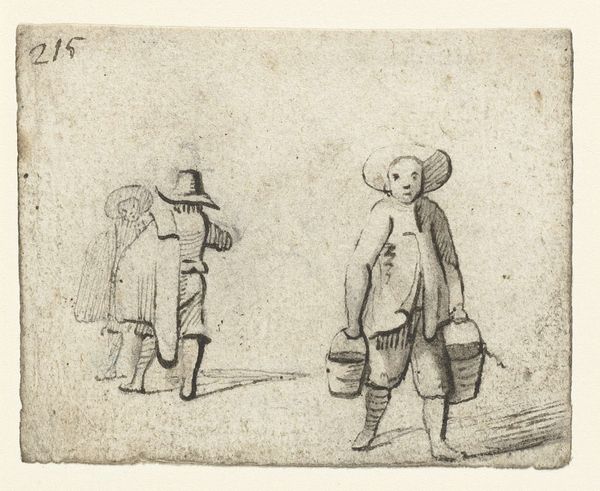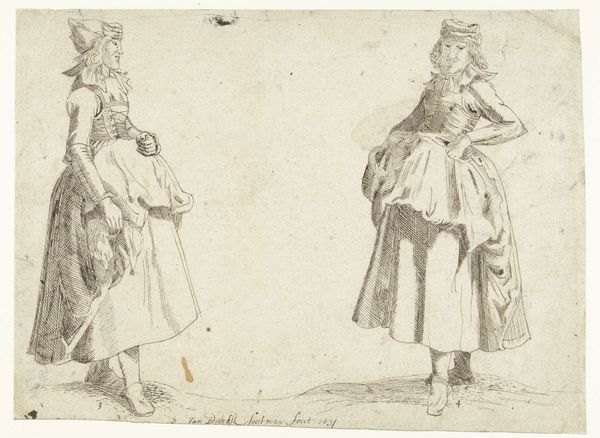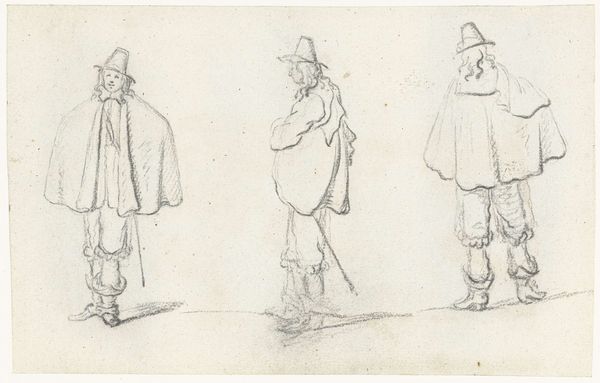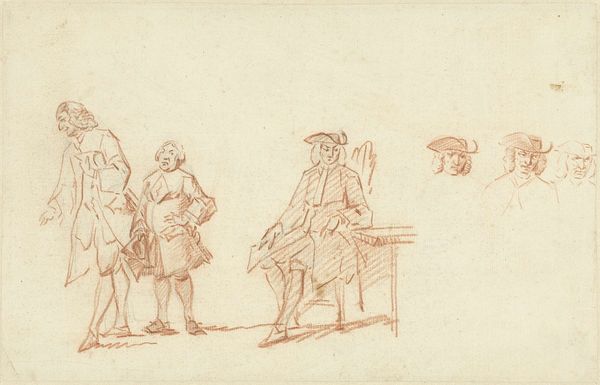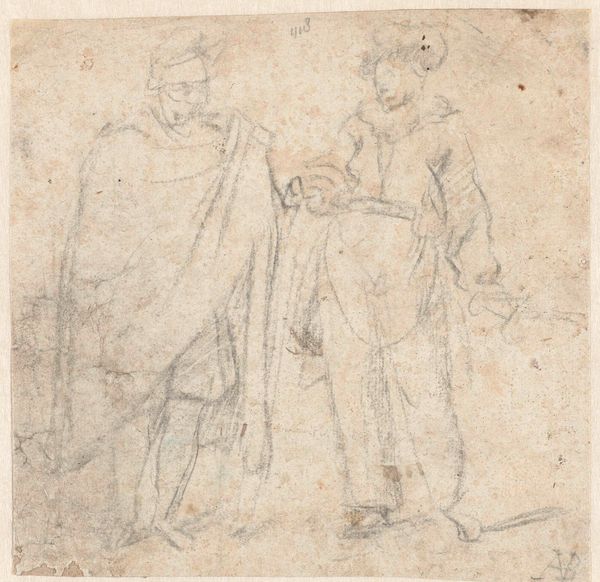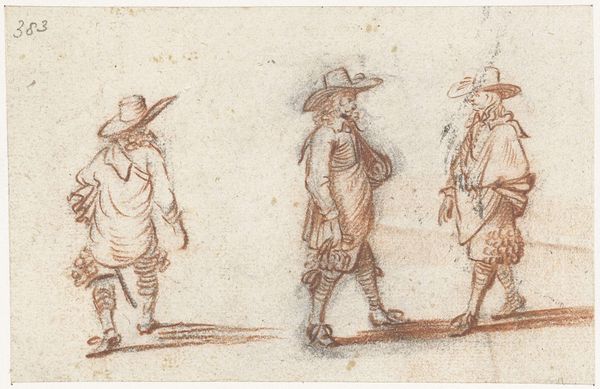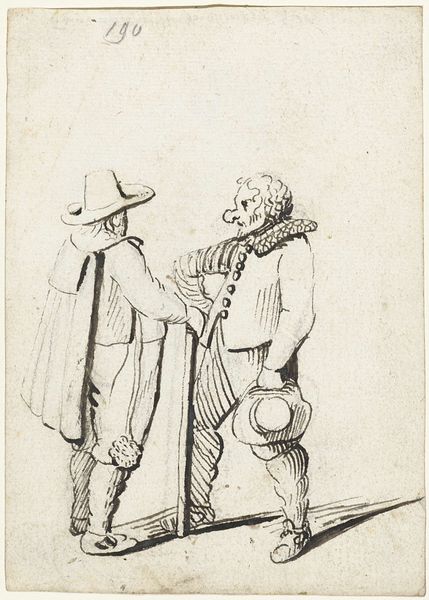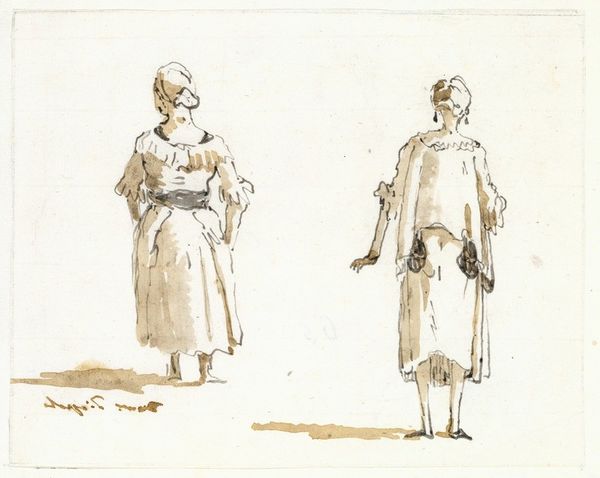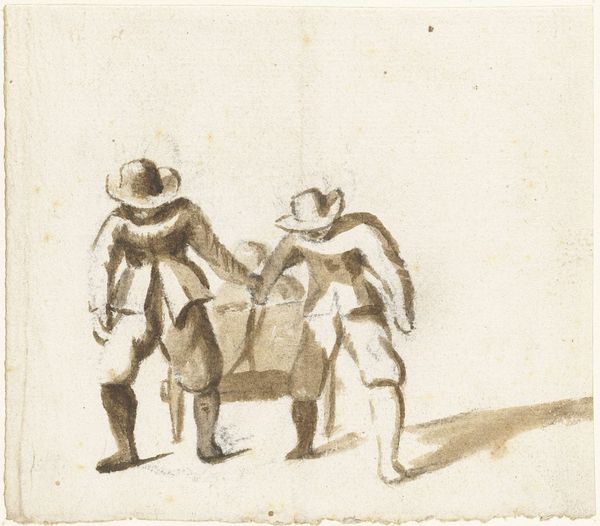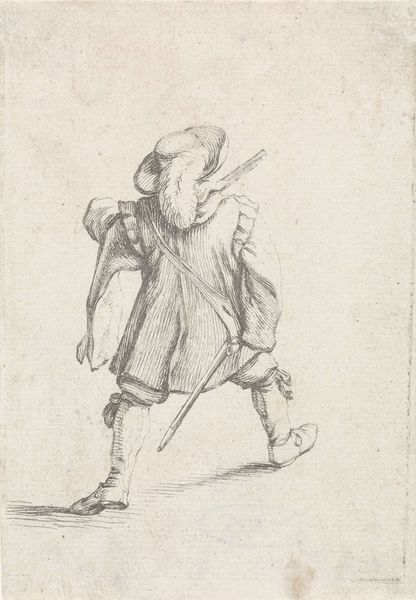
Studieblad met een vrouw die een emmer draagt en een man in een cape before 1680
0:00
0:00
drawing, paper, pencil
#
portrait
#
drawing
#
imaginative character sketch
#
quirky sketch
#
dutch-golden-age
#
landscape
#
figuration
#
paper
#
personal sketchbook
#
idea generation sketch
#
ink drawing experimentation
#
pen-ink sketch
#
pencil
#
sketchbook drawing
#
genre-painting
#
storyboard and sketchbook work
#
sketchbook art
#
initial sketch
Dimensions: height 110 mm, width 156 mm
Copyright: Rijks Museum: Open Domain
Editor: Here we have "Studieblad met een vrouw die een emmer draagt en een man in een cape", a drawing on paper by Gerard ter Borch the Younger, dating from before 1680. It’s a pretty quick sketch, and I'm curious about why Ter Borch chose to depict these figures. What can you tell me about this drawing? Curator: Well, it's intriguing, isn't it? These figures offer a glimpse into the socio-cultural landscape of the Dutch Golden Age. Ter Borch, known for his genre paintings of refined society, uses this sketch to explore types - maybe preparatory work for a larger painting? Notice the woman carrying the bucket; such details reflected the daily lives of ordinary people. But the man in the cape, armed with a sword, complicates the image. Who did he represent? Was it perhaps the burgher militia? How does that blend social strata and public life? Editor: That's a good point about the militia, but isn't the woman just doing everyday tasks while the man looks like a figure of authority? What does that contrast suggest about the societal power structures? Curator: Exactly! The contrast invites us to think about the very public role that the elites, like our caped figure, were seen to play, especially in the 17th century. And more broadly, we need to think of the context. Dutch art from this time often reflected and shaped ideas about national identity, social order and moral values, often serving public needs and expectations. The sketchbook format is a private insight, though. What purpose do you imagine a sheet like this served? Editor: So this sketch is more than just a casual doodle. It captures social dynamics and ongoing tensions about how society should be? I will look for hints of socio-political critique in Dutch art more often from now on. Curator: Precisely. The beauty of these older pieces resides in revealing so much of society's ambitions, concerns, and internal politics. Now, back to looking closely!
Comments
No comments
Be the first to comment and join the conversation on the ultimate creative platform.


